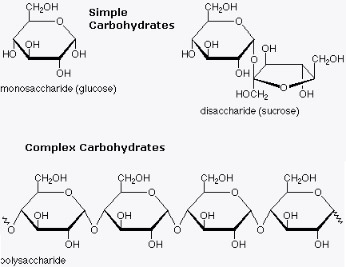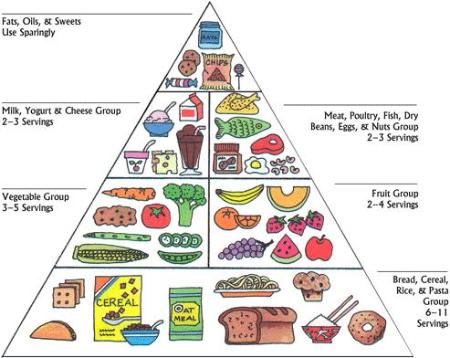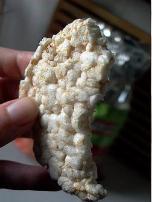Resources
Bookmark or Share this page
Carbohydrates
Many people are confused about Carbohydrates, and they are also generally misinformed as to the role they play in a healthy human diet. In the 1970’s and 80’s Fat was the enemy and so most “healthy” diets contained high amounts of carbohydrates to compensate for the lack of calories from fat in the average intake.
In the 90’s and early 00’s, once that approach had generated a significantly overweight population; Dr Atkins developed the hugely popular and arguably successful low-carb diet approach.
Whilst not winning awards for the worlds healthiest diet plan, due to liberal inclusion of artery clogging processed fats, the effect on bodyfat levels was undeniable. This new wave of carb-phobia in response to the previous decades of carb abundance has left the vast majority of slimmers utterly confused.
Not surprisingly, the answer lies somewhere in the middle. Carbs are a necessary part of any diet, but eating them requires a certain level of understanding. Read on to grasp the fundamentals.
Carbohydrates are one of three macronutrients in our diets which provide calories. The other two are protein and fat.
Carbohydrates provide the pure energy needed in our daily lives, both for normal body functions such as heartbeats, breathing and digestion and for extra exercise such as cycling, walking and running.
The later obviously requiring more energy than the former. Carbohydrates come in two types: “simple” or “complex” – and this is based upon their chemical structure.
Both types contain four calories per gram. Once eaten, both are turned into a blood sugar called glucose, which is then used to fuel our bodies for rest or play.
Due to the ”simple” structure of simple carbs, they are digested and turned into glucose faster than complex structures, which require slightly more digestion and so therefore take a bit longer to turn into useable energy.

In the past few years, simple carbohydrates have become known as the 'bad' carbs, while complex carbs seem to be designated as the 'good' ones. Although this is based more on media hype than science, here are the reasons why:
Simple carbohydrates are more easily processed (and so require little work from the body to digest) and contain just one sugar molecule or two sugar molecules linked together. Examples include table sugar, sweets, honey, fruit, fruit juice, jam, chocolate etc, also refined grains such as white bread, cakes and white pasta fall into this category.
The reasoning behind these foods being labelled “bad” is that these foods are high in calories compared to their nutritional content, and their thermic effect is very low (this means the body does not expend much energy to digest this food, because the process is easy).
Complex carbohydrates, are on the other hand; a chain of sugar molecules linked together. These are touted as your “healthy carbohydrates” so things like granary bread, cereals, oats, museli, rice, brown pasta, vegetables, salad, beans and lentils.
The body has to work harder to break down the links in the chain, so the thermic effect is a little higher, meaning the net available calories (total calorie content of food MINUS calorie expenditure used during digestion = net available calories) is reduced.
They require more work (energy) from the body to process. Another benefit to eating complex is the fact that their energy provision is delivered over a longer period in comparison to simple carbs, due to the more sustained nature of their digestion.
The majority of the carbohydrates we consume should be complex. They contain fibre, which is hugely necessary in the diet for many reasons, and complex carbs can be very nutrient dense compared to their calorie content. This is more applicable to vegetables, salad, beans and lentils rather than brown grains.
Most experts recommend that 50 to 70 per cent of the total calories in our diet should come from carbohydrates. This is based upon the “Food Pyramid” (whose research was funded by; and subsequent nutrition guidelines were issued by – the United States Department of Food and Agriculture – the people responsible for grain production. Grains are...you guessed it – Carbohydrates. It is worth noting that the USDA is responsible for promoting agricultural commerce, rather than the health of the citizens.)
So The Food Guide Pyramid was promoted by the U.S. Agriculture Department from 1992 as a replacement for the “four food groups” scheme that had been previously been used to teach children about nutrition since the 1950s.
The four food groups (milk group, meat group, bread and cereals group, and the vegetable and fruit group) had put a greater emphasis on the consumption of fresh produce, meat and dairy products. But changes in food industry and farming meant that grains were becoming more profitable per square metre than cows. (How much grazing area does a stalk of wheat require?)

Food Pyramid - a core concept in nutritional guides around the world

This worked well for retailers too, as most processed grains have a long shelf life, which in turn preserves their investment in stock.
Anyway! Back to the science!
So now we know that both types of carbohydrate have a different effect in the human body due to its structure, and this will affect how the body is able to use the fuel. It all comes down to:
How quickly and/or easily the carbohydrate molecule is broken down and absorbed.
What other macronutrients (protein or fats) are consumed simultaneously to the carbohydrate source (so as part of a sandwich or a cake) or whether the carbohydrates are ingested alone (eg: rice cakes).
Carbohydrates are first and foremost a source of immediate energy for all of your body’s cells. Because they are so easily digested, your body will use carbohydrates for energy above all else.
Your body is always hungry for energy, whether you are sleeping, strolling, jogging or even in a coma – your body requires fuel. Just how much depends on your body composition, dieting history and activity levels, so we’ll get onto that later.

All carbohydrates we consume are digested into simple sugars. Yep, every single carb – even the high-fibre, low glycemic index, complex carbs you choose - become sugar molecules once they’re inside the body.
These sugars first go to the liver to fill up your energy stores. When this is full, they enter the bloodstream and venture out towards the muscles of the body to provide them with the fuel to move. It is while the sugar is travelling in the blood that insulin is released to calm this “sugar load”.
There are differences between individuals and how they handle carbohydrates. Generally, carbohydrates that are digested and absorbed slowly can help to control insulin response and energy levels. But many people (particularly those who have frequently relied on high-carb low-fat diets have developed an over sensitive insulin response.
Their bodies have become “paranoid” to an ingestion of carbohydrates, and the release of insulin is over-necessary. This causes a rapid rise and fall in blood sugar, and a subsequent reoccurring hunger. This is known as insulin resistance.
The rising and falling of blood sugar in any person is the determinant of their energy levels and hunger. Low blood sugar (often caused by an overzealous insulin response in high carb eating people, but common also in low calorie dieters and diabetics) causes lack of energy, dizziness, hunger and cravings for more carbohydrates to re-raise blood sugar.
Vicious cycle, no? Good Job the makers of Snack A Jacks know this! While we’re talking hunger, it may be worth evaluating energy content per gram vs. satiety.
As previously mentioned, carbohydrates contain 4 calories per gram. We also know that they are processed first by the body. So if carbs are digested first, and are digested quickly, how can they keep you full?
Carbohydrates usually come hand in hand with a lot of air (eg: bread) or water/starch (eg: jacket potatoes) which are initially filling, but this effect doesn’t last long once un-nutrients (air, water) have been siphoned off by the digestive system.
Think about it - How long after that huge dish of pasta are u actually scouting for late-night nibbles? And how long after your high fat high protein turkey dinner at Christmas are you really ready for pudding? ;-)
Why is carbohydrate intake so important?
According to the government guidelines, carbohydrates should be abundant in our diets.
According to the myriad of food advertisements, we should be looking to get “5 servings of wholegrains per day” in our diets. (Quote: Walkers Sunbites TV Ad, 2008). Does anyone say why?
Sometimes they will site “fibre” as the reason, but more often than not, there will be no supporting reasoning to accompany their “recommendation”, other than the fact that they will profit from your purchase. Incidentally, a wholegrain bread roll may contain around 2g of fibre, the equivalent calories worth of cauliflower contains 24g.

Carbohydrate intake IS important.
It’s important to power your body. But you should assess what you require your body to perform, and adjust your intake of fuel accordingly.
You would never splurge on premium high performance petrol and oil for power a Fiat Panda through a once weekly 2 mile commute, would you? Unnecessary. So yes, your body requires carbohydrates to function. But we should really be looking at the lower calorie, nutrient dense sources of carbs rather than the types high in body-sugar, low in actual nutrition.

eg: choose 500g of strawberries in the place of just one third of a wholegrain baguette (65g) and for equal calories and carbs – three times as much fibre, a million times more vitamins and minerals and a much more enjoyable experience altogether ;-) mmmm strawberries!
In terms of satiety (feeling full) you’d choose 500g of food over 65g any day, wouldn’t you?
Summary and Recommendations
Carbohydrates are important, but not as important as the current government guidelines would have you believe.

An average carbohydrate intake should be between 90-130 grams per day with the majority coming from vegetables, salad and fruits. (as opposed to the government guidelines of 240 per day with majority coming from starch and grains).
Higher amounts of carbohydrates are needed with increased muscle mass and increased physical activity levels.
One last thing, remember carbohydrates are your body’s primary energy source? Your body stores excess fat for times of potential famine. Ie: it stores energy for use in times of scarcity.
If we drip-feed our bodies low fat (and therefore by definition high carb) snacks throughout the day, and centre our meals around cereal, whole grains and jacket potatoes...you will have a constant supply of available energy... how can you ever expect to tap into your stored energy and shed your bodyfat?
To conclude today’s lesson: Listen to all advice. But take absolutely NO notice unless its supported with fact and evidence.

